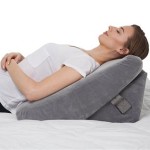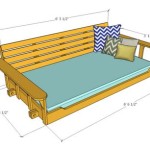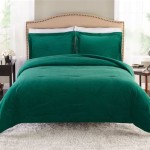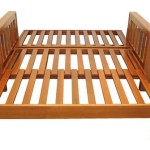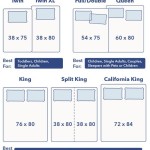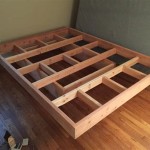What Is a Featherbed Mattress Topper Made Of?
A featherbed mattress topper provides a layer of plush comfort atop a mattress, enhancing sleep quality. Unlike down-filled toppers, featherbeds utilize feathers, offering a firmer feel and distinct advantages.
The primary component of a featherbed mattress topper is, as the name suggests, feathers. These feathers typically originate from geese or ducks, with goose feathers generally considered higher quality due to their larger size and superior loft, resulting in a plusher feel. Duck feathers are a more budget-friendly option, offering a slightly firmer feel.
The feather sourcing process plays a crucial role in the quality and ethical considerations of the final product. Reputable manufacturers obtain feathers as a byproduct of the poultry industry, ensuring they are ethically sourced and not plucked from live birds. Consumers interested in ethical sourcing should look for certifications like the Responsible Down Standard (RDS).
The construction of a featherbed topper involves several key elements. The feathers are encased within a ticking, a tightly woven fabric that prevents feathers from poking through and maintains the topper's shape. Common ticking materials include cotton, down-proof cambric, or polyester blends. Higher thread counts generally indicate a more durable and luxurious ticking.
Baffle box construction is a prevalent method used in creating featherbed toppers. This technique involves sewing internal walls within the topper, creating individual compartments or "baffles" that contain the feathers. Baffle boxes prevent feather shifting and clumping, ensuring even distribution and consistent loft throughout the topper's lifespan. Other construction methods include channel stitching and sewn-through stitching, though baffle box construction offers superior loft and even feather distribution.
Featherbed toppers offer a range of benefits beyond added comfort. Their natural breathability helps regulate temperature, promoting a cooler sleep experience compared to synthetic alternatives. The natural loft of feathers provides excellent pressure point relief, particularly beneficial for side sleepers or individuals with joint pain. Furthermore, featherbeds conform to the body's contours, offering personalized support.
The firmness level of a featherbed topper depends on several factors including the type of feathers used (goose or duck), the fill power (a measure of feather loft), and the overall construction. Generally, featherbeds offer a medium level of firmness, providing a balance of support and cushioning. Consumers seeking a plusher feel may opt for a higher fill power or a topper with a greater percentage of goose feathers.
Caring for a featherbed topper requires specific attention to maintain its longevity and hygiene. Regular airing helps to refresh the feathers and prevent the buildup of moisture. Most featherbed toppers are not machine washable; professional cleaning is recommended. Spot cleaning minor stains with a mild detergent is permissible, ensuring thorough drying afterward to prevent mildew growth. Using a protective cover can further extend the lifespan of the featherbed and simplify the cleaning process.
Several factors influence the price of a featherbed topper. The type of feather (goose or duck), the fill power, the ticking quality, and the overall construction all contribute to the final cost. Higher quality materials and construction generally translate to a higher price point. However, featherbed toppers offer a long-term investment in sleep quality.
Differentiating featherbeds from down toppers involves understanding the key distinctions between feathers and down. Down consists of the soft, fluffy undercoating of waterfowl, prized for its exceptional insulation and lightness. Featherbeds, on the other hand, utilize the outer feathers, which offer a firmer feel and greater resilience. Down toppers provide a cloud-like, enveloping feel, while featherbeds offer a more supportive and buoyant sensation.
Choosing between a featherbed and a down topper depends on individual preferences and sleep needs. Individuals seeking a plush, sinking sensation may prefer a down topper. Those who prefer a more supportive and responsive feel, with a balance of comfort and support, might find a featherbed more suitable.
Featherbed mattress toppers offer a natural and luxurious way to enhance sleep comfort and support. Understanding their composition, construction, benefits, and care requirements empowers consumers to make informed decisions when selecting the ideal topper to meet their individual sleep needs and preferences.
Consumers are encouraged to research different brands, compare features, and consider their individual sleep preferences before purchasing a featherbed mattress topper. Reading customer reviews and comparing prices can further aid in the decision-making process.

White Duck Feather Down Mattress Toppers Linen Mill

Feather Bed Mattress Topper West Elm

Feather And Duck Down Mattress Topper Glencraft Luxury

Classic Featherbed Pottery Barn

Goose Feather Down Mattress Topper Double Layer 3 Thick Www Thehouseofemily Com

3 Gusset Wall Filled Down And Feather Microfiber Fiber Ball Mattress Topper China Made In Com

Duck Goose Down Feather Mattress Topper In 100 Cotton Fabric China And Made Com

Down Mattress Topper Plushbeds

Dual Layered Feather Bed

Chaps Baffle Box Feather Bed Made In The Usa Pillows Com
Related Posts

